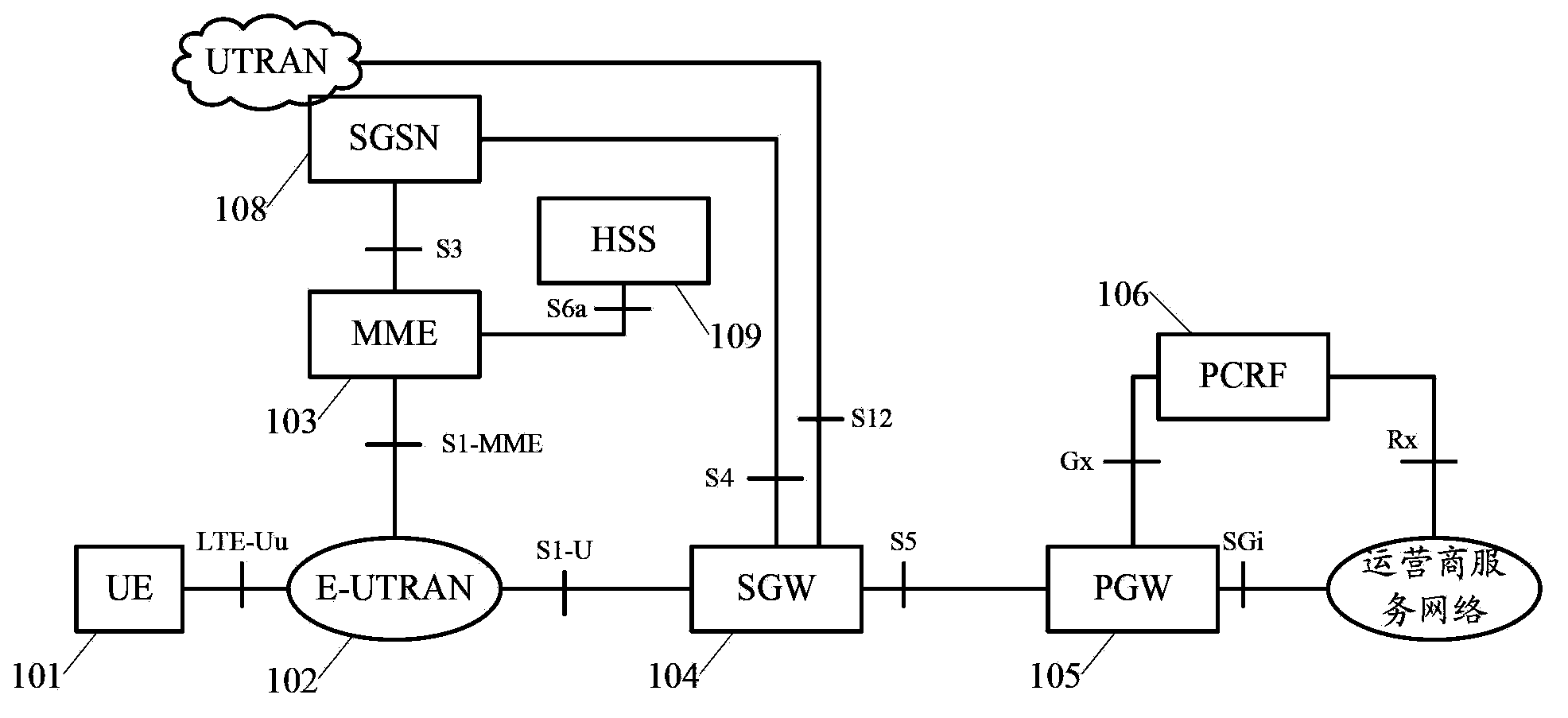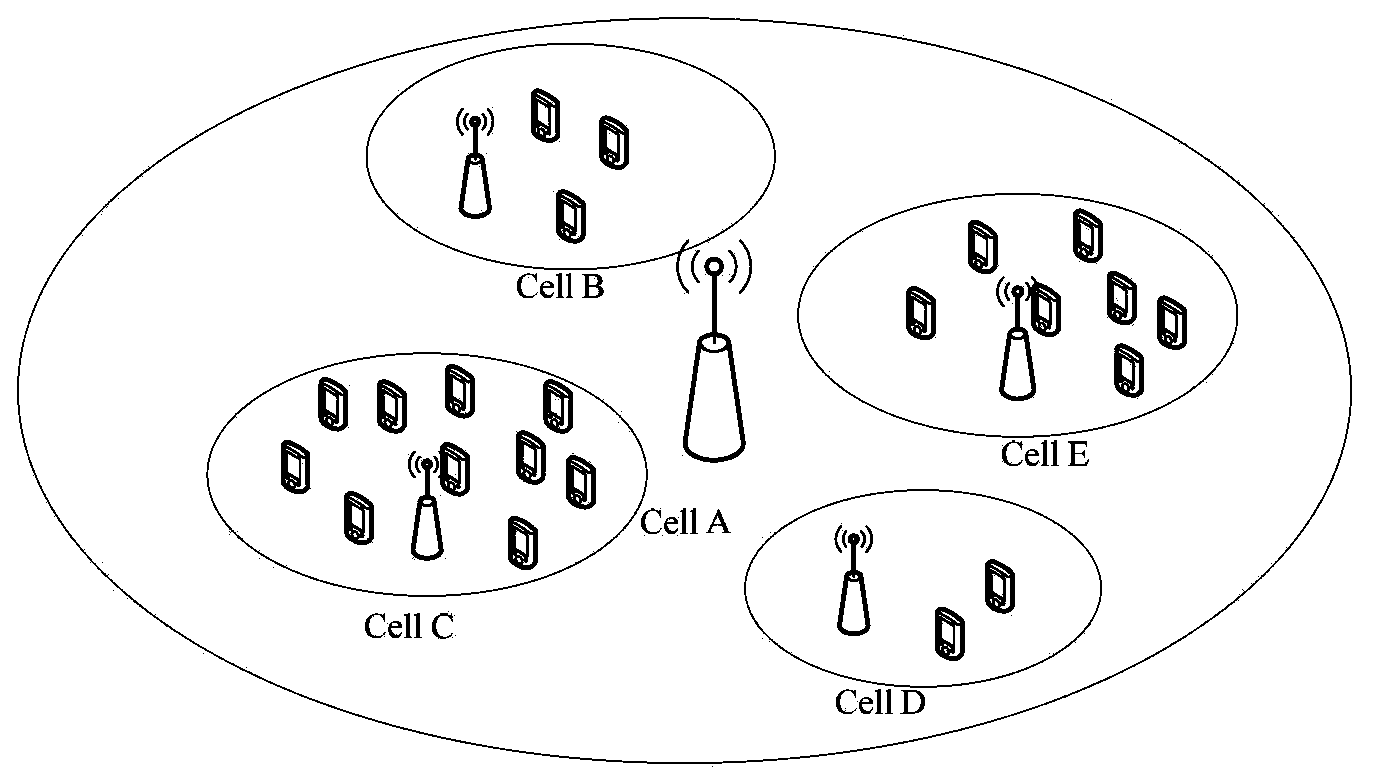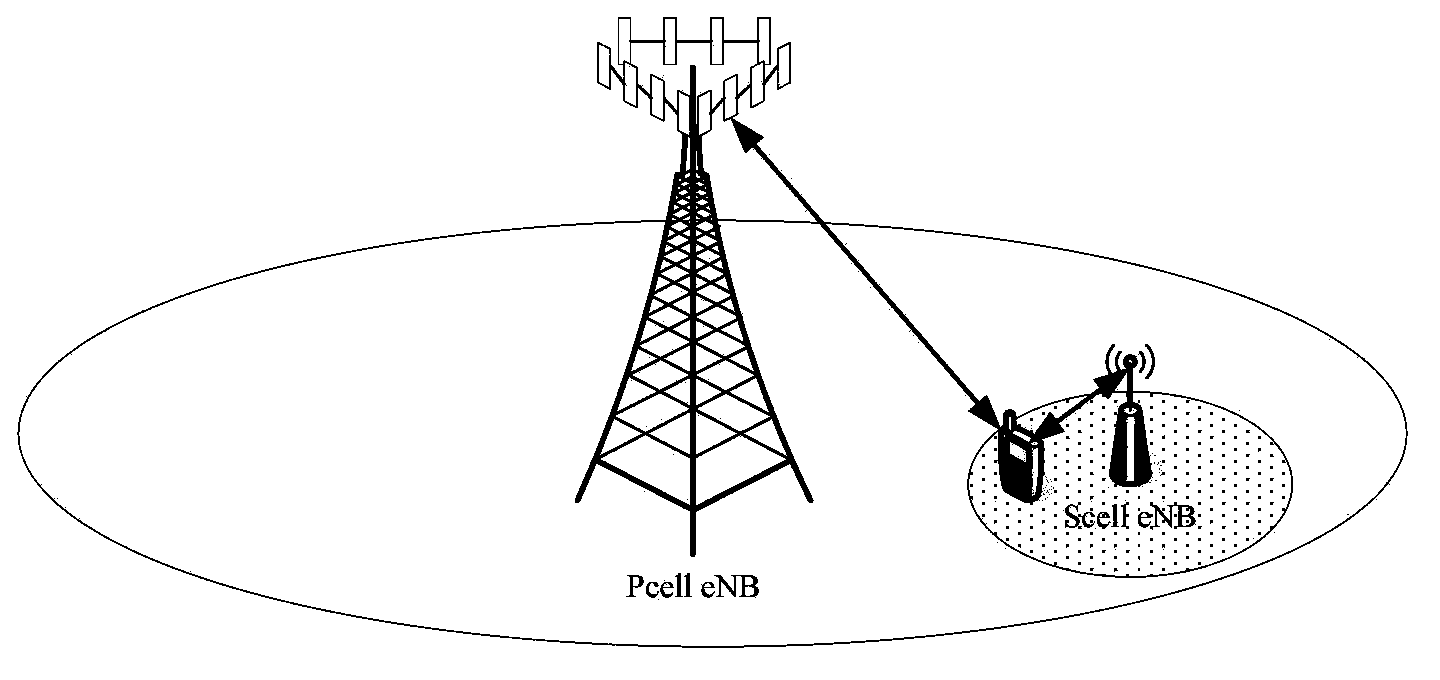Data transmission method and system in heterogeneous network
A data transmission method and heterogeneous network technology, which is applied in the field of data transmission methods and systems, and can solve problems such as non-monitoring
- Summary
- Abstract
- Description
- Claims
- Application Information
AI Technical Summary
Problems solved by technology
Method used
Image
Examples
Embodiment 1
[0092] This embodiment describes the process of exchanging cell configuration information between eNBs. The configuration parameters related to configuring the SCell can be divided into two categories, one is semi-static configuration parameters, and the other is dynamic configuration parameters. Semi-static configuration parameters can be exchanged between eNBs during the establishment of the X2 interface. The eNB notifies the adjacent eNB of the semi-static configuration parameters related to the SCell configuration through the X2 interface establishment process. After that, the adjacent base station saves the received semi-static configuration parameters and configures the secondary cell for the UE. , using this semi-static configuration parameter. When the PCell configures the SCell for the UE, if the SCell and the PCell are on different base stations, the PCell requests the SCell for the dynamic configuration parameters of the SCell, for example: physical layer-specific ...
Embodiment 2
[0108] This embodiment describes the process in which the network establishes a PCell and an SCell for a UE. see Figure 6 , the process takes establishing an SCell as an example, and may include the following steps:
[0109] Step 601: The UE establishes an RRC connection with the base station. In carrier aggregation, the cell with which the UE establishes an RRC connection is the UE's PCell.
[0110] Here, the process of establishing the RRC connection is the same as the currently defined process. The process is briefly described below: UE sends an RRC connection request message to PCell, the message contains information such as the reason why UE wants to establish RRC and the identity of UE; PCell sends an RRC establishment message to UE, and the message contains configuration information of signaling bearer; UE sends RRC Create a response message to the PCell, the message contains the NAS message and the PLMN identifier selected by the UE.
[0111] Step 602: PCell sends...
Embodiment 3
[0135] This embodiment describes the process of releasing an SCell, such as Figure 7 As shown, the process may include the following steps:
[0136] Step 701: the base station where the SCell is located sends an SCell status report message to the base station where the PCell is located.
[0137] Data is transmitted between the SCell and the UE, and signaling of the physical layer and the MAC layer is transmitted. The SCell can obtain the quality status of the SCell through the received physical layer report information, such as the CQI report information. The quality situation is reported by the SCell to the PCell, and the PCell can monitor the quality situation of the SCell. The reporting of the quality status can be periodic or event-triggered, and the reporting mechanism can be configured by the PCell or OAM. Taking event triggering as an example, if the quality of the SCell does not meet predetermined requirements within a period of time, the SCell may send an SCell sta...
PUM
 Login to View More
Login to View More Abstract
Description
Claims
Application Information
 Login to View More
Login to View More - R&D
- Intellectual Property
- Life Sciences
- Materials
- Tech Scout
- Unparalleled Data Quality
- Higher Quality Content
- 60% Fewer Hallucinations
Browse by: Latest US Patents, China's latest patents, Technical Efficacy Thesaurus, Application Domain, Technology Topic, Popular Technical Reports.
© 2025 PatSnap. All rights reserved.Legal|Privacy policy|Modern Slavery Act Transparency Statement|Sitemap|About US| Contact US: help@patsnap.com



